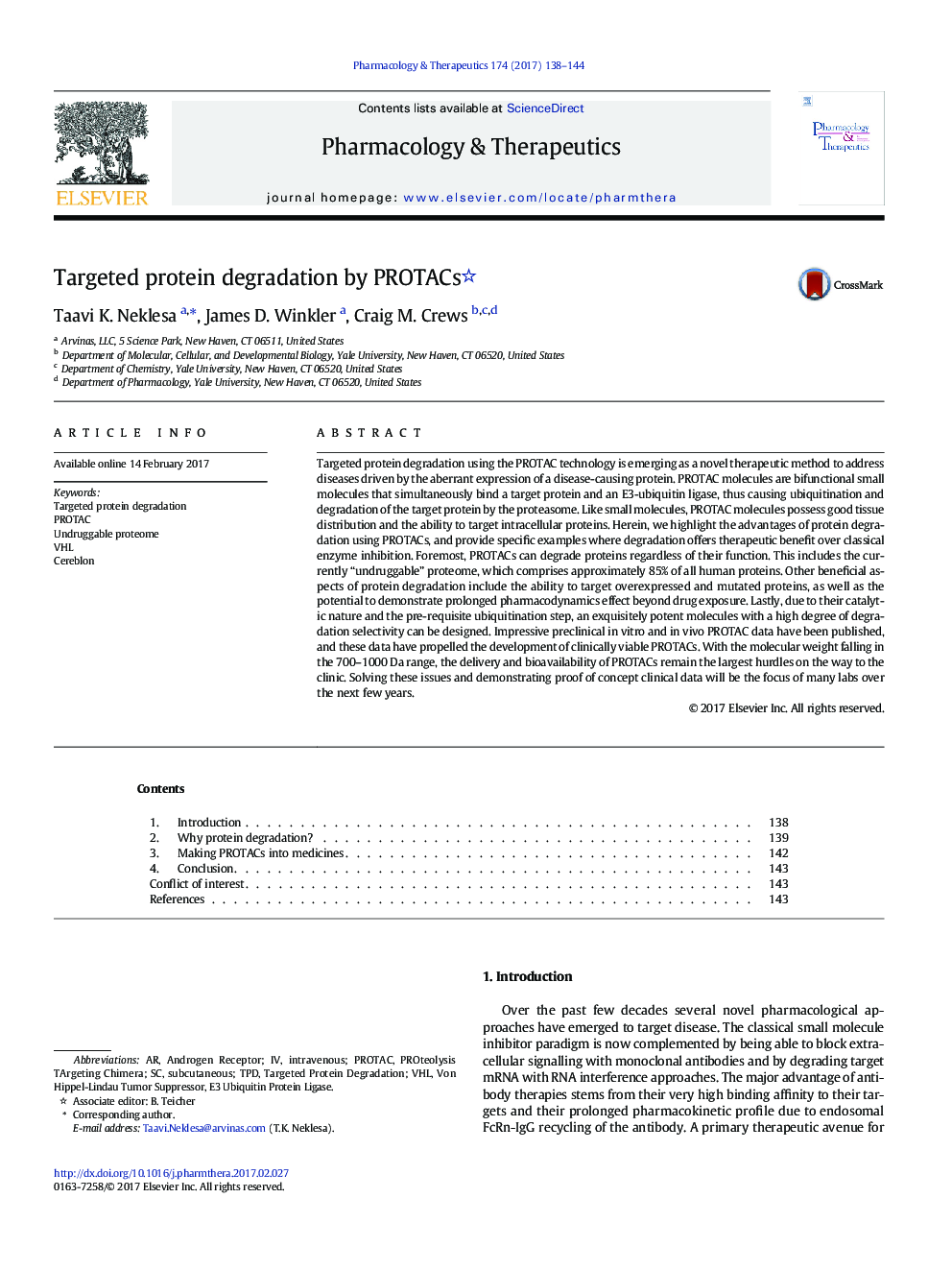| کد مقاله | کد نشریه | سال انتشار | مقاله انگلیسی | نسخه تمام متن |
|---|---|---|---|---|
| 5557744 | 1560931 | 2017 | 7 صفحه PDF | دانلود رایگان |

Targeted protein degradation using the PROTAC technology is emerging as a novel therapeutic method to address diseases driven by the aberrant expression of a disease-causing protein. PROTAC molecules are bifunctional small molecules that simultaneously bind a target protein and an E3-ubiquitin ligase, thus causing ubiquitination and degradation of the target protein by the proteasome. Like small molecules, PROTAC molecules possess good tissue distribution and the ability to target intracellular proteins. Herein, we highlight the advantages of protein degradation using PROTACs, and provide specific examples where degradation offers therapeutic benefit over classical enzyme inhibition. Foremost, PROTACs can degrade proteins regardless of their function. This includes the currently “undruggable” proteome, which comprises approximately 85% of all human proteins. Other beneficial aspects of protein degradation include the ability to target overexpressed and mutated proteins, as well as the potential to demonstrate prolonged pharmacodynamics effect beyond drug exposure. Lastly, due to their catalytic nature and the pre-requisite ubiquitination step, an exquisitely potent molecules with a high degree of degradation selectivity can be designed. Impressive preclinical in vitro and in vivo PROTAC data have been published, and these data have propelled the development of clinically viable PROTACs. With the molecular weight falling in the 700-1000Â Da range, the delivery and bioavailability of PROTACs remain the largest hurdles on the way to the clinic. Solving these issues and demonstrating proof of concept clinical data will be the focus of many labs over the next few years.
Journal: Pharmacology & Therapeutics - Volume 174, June 2017, Pages 138-144